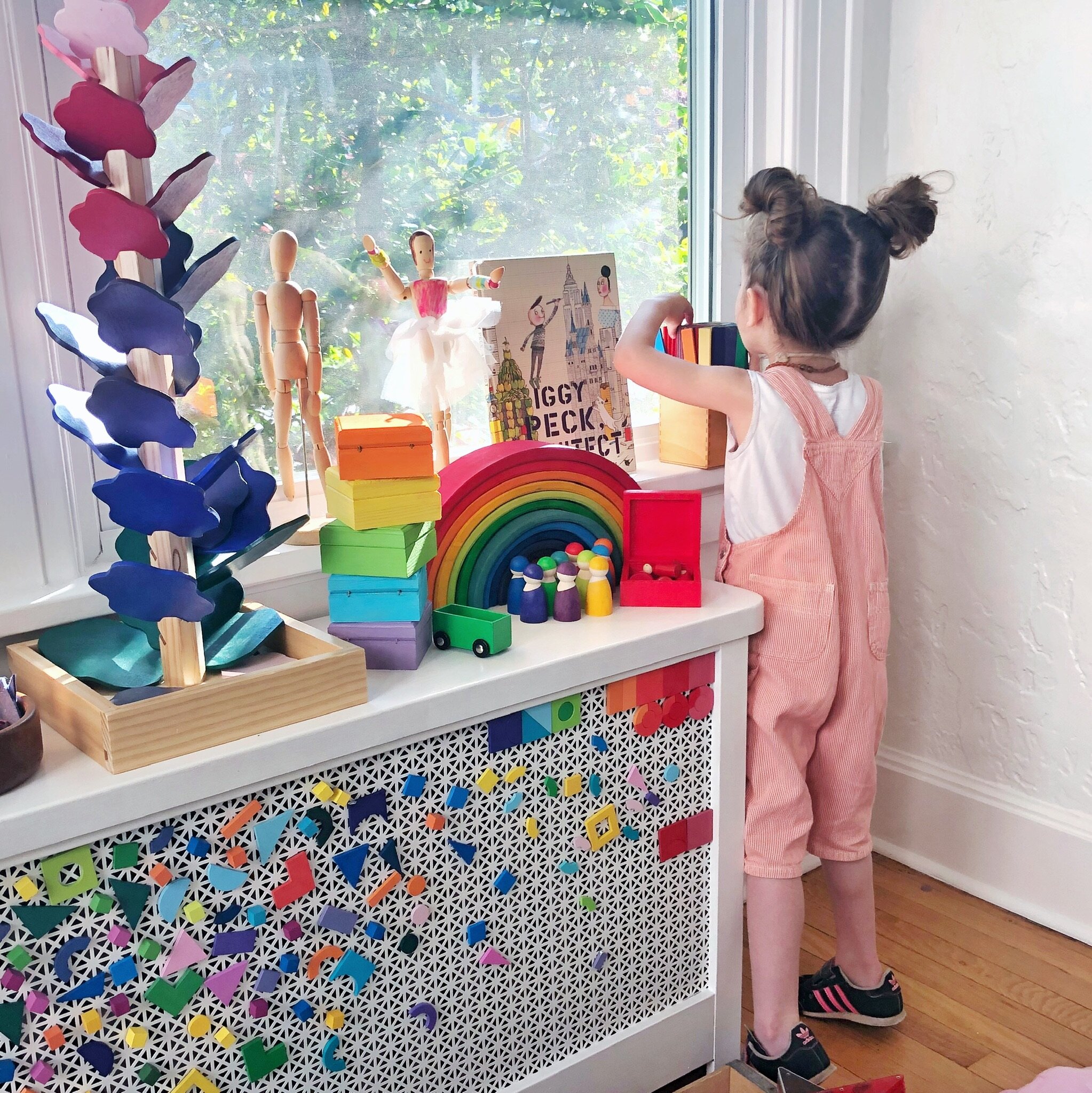How to Talk to Children About Their Artwork
/You know that moment when your child proudly shows you his drawing and you have no clue what it is? They are beaming at you with expectation and you say…That’s beautiful, honey! (Then you inwardly panic that they’ll realize that you don’t know what it is.)
Let’s think about how we respond to our children’s artwork…
Do we offer them a conversation starter or conversation ender? Does your child create from within for herself or does he scribble a few lines and look for praise?
In this post, I am going to teach you how to talk to your child about their artwork and share some basic do’s and dont’s.
Observation:
I’ve spent a lot of time over the years observing children at work (clay, paint, drawing, etc). I love to watch and listen to be a very quiet presence only interacting if invited, and even then, only reflecting back their own words and mannerisms to them. The reason is because I really respect their process. I don’t want to take away from it by distracting them with my own adult notions. When you are a very still presence, you can learn so much about the inner workings of a child’s mind as they create.
Sadly, there have been so many times when a child is deep in the process and I will see an adult (teacher or parent) with the best of intentions squash the whole thing in one fell swoop. They’ll ask, “What are you making?” or they might interject about how beautiful the creation is.
Now, I know that seems so innocent, and many people think that’s what they are supposed to be doing in order to engage with a child. But I want you to stop for a moment. Think about when you are cooking, for example. You are using all of your senses to read the recipe, measure, taste, smell the aromas, etc. Would you not find it distracting if someone popped up on your countertop and started asking you questions about the final outcome? What if they wanted to talk about the recipe and micromanage how you are following it? What if they thought you were making meatloaf when really, you were making soup? How annoying would that be? Would you feel the relaxing enjoyment that you might otherwise derive from making your favorite soup?
It’s the same thing for our children when they are creating. Sometimes, our well-meaning input takes the joy out of creating and becomes about us and not them. They have their entire lives ahead of them to be judged, both by themselves and others. Right now, while they are still young and creating for the pure joy of creating let’s really try to honor that.
Here’s how:
Be a quiet presence. Observe closely and try not to comment unless invited by the child.
Use reflective language. When your child says, “I’m making a picture of mommy.” just repeat that back- “Oh, you are making a picture of mommy.” Resist the urge to squeal and gush and change the course of things.
Allow your child the repeated use of sturdy, simple materials. Gaining mastery over basic materials (crayons, paper, scissors) gives them the opportunity to express themselves, problem-solve and grow over time. You will be amazed at what they come up with when the materials are basic and open-ended.
Honor the process. Making art with children is about exactly that. The making. The process. The creating, not the creation. Be as in tune, if not more in tune with the creative problem-solving process than only valuing the final outcome.
Have fun and create often.
Let’s take a look at an example:
Conversation one:
Child: Mommy, look at my drawing!
Mom: Wow! That’s so pretty. Is it a person?
Child: (Somewhat dejected) Um, no it’s a big scary monster.
Mom: Oh… right! Of course it is.
Conversation Two
Child: Mommy! Look at my drawing.
Mom: I see your drawing! You used bright blue and it looks like you made some big motions with your arms to draw those lines.
Child: (excitedly) Yeah, because it’s a big monster and I had to draw how strong he is.
Mom: It is a big, strong, blue monster! I wonder why you chose blue?
Child: The blue is because he hides in the sky when he is sneaking up on people.
Mom: Sneaking up on people? That sounds interesting.
Child: Yes… he sneaks up on people and then he yells Rawr!!!
Mom: He yells Rawr? That sounds really scary. What kind of lines might you use to show how that scary blue monster is yelling?
Can you see the difference in these two conversations? In the first conversation, the child is excited to share and then he seems unsure how. The second conversation is child-led and the adult supports the child in confidently sharing her work and ideas.
Still not sure how to do this? I got you…
Never guess what your child made. Instead, notice something without judgment about the picture.
Comment on the color- Oh! You chose yellow to make those marks.
Comment on lines and shapes- You used lines that zig-zag and some dots in your work.
When you approach the art this way, you can really examine their picture together without assuming anything. Remember, children are not always going to draw representationally. Their experimentation with lines and marks is just as important and we want to encourage that.
I hope you found this post helpful. If you want to hear more from me, please be sure to join the conversation over on Instagram.
-Lizzie










Rescuing them from discomfort also robs them of resilience.